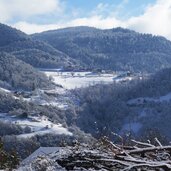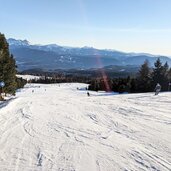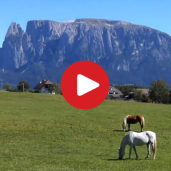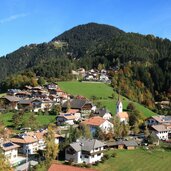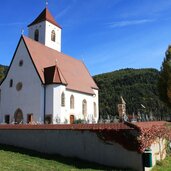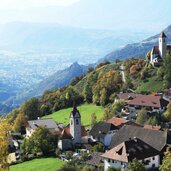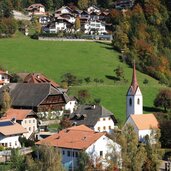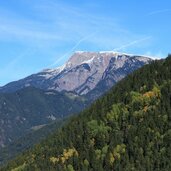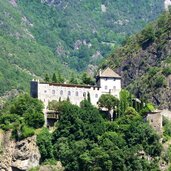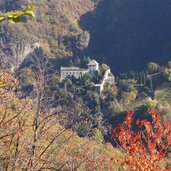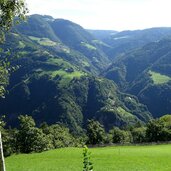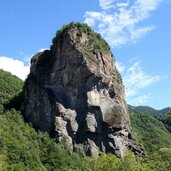Discover the tranquil hamlet of Vanga, perched above the Sarentino Gorge beneath the striking Monte San Giovanni
Image gallery: Vanga
Located on the sunny side of the Alps, Vanga (Wangen) invites you to savour nature's tranquillity. This mountain hamlet, located over 1,000 metres above sea level, is surrounded by dense forests and expansive meadows, set apart from the other villages and hamlets of the Renon plateau. An inn, the primary school, and the Church of St. Vigilius form the heart of Vanga.
At the edge of the hamlet stands the old Parish Church of St. Peter. The farmsteads stretch from Vanga di Sotto to the Rio Vanga towards the Sarentino Gorge. The stream itself flows into the Talvera River, which runs through Bolzano. The impressive ruins of Vanga-Bellermont, built from 1209 onwards by the influential Lords of Vanga, are a notable sight. Destroyed in 1277, the castle was rebuilt in the 16th century. The complex is privately owned and not open to the public.
An earlier castle once stood nearby, perched on the Monte San Giovanni, literally St. John's Rock, a prominent, 660-metre-high rock overlooking the Sarentino Gorge. Today, only St. John's Chapel, which gave the rock its name, remains at the summit. Archaeological finds indicate that people frequented this striking location as far back as the Neolithic period.
Vanga is also known for its connection to the Sarentino Valley: A road leads from the Renon high plateau, via Vanga and Vanga di Sotto, down into the Val Sarentino. Vanga di Sotto (literally: Lower Vanga) is part of the municipality of Sarentino, while Vanga still belongs to the Renon municipality. A hike in this tranquil area leads from Soprabolzano via Vanga to the Sarentino Gorge - a 3.5-hour tour culminating in the thrilling crossing of a suspension bridge.


